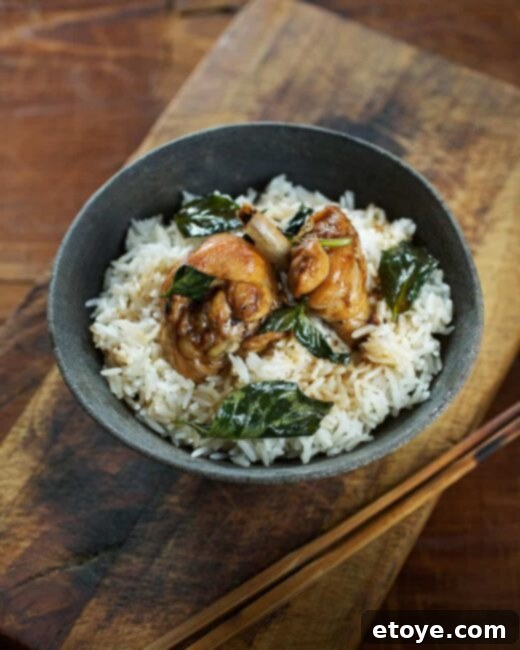Unlocking the Art of Authentic Chinese Cooking with Kian Lam Kho’s “Phoenix Claws and Jade Trees”
In the vibrant and ever-expanding world of Asian culinary literature, certain cookbooks rise above the rest, offering not just a collection of recipes but a profound journey into the heart of a culture’s gastronomy. This year, two such exceptional titles have emerged as indispensable guides for lovers of genuine Asian cuisine. While Nancy Hachisu’s “Preserving the Japanese Way” has set a new standard for traditional Japanese techniques (a book we eagerly anticipate featuring in a dedicated article), it is Kian Lam Kho’s “Phoenix Claws and Jade Trees: Essential Techniques of Authentic Chinese Cooking” that truly shines as a definitive masterclass in Chinese gastronomy. Both books are meticulously crafted for enthusiasts seeking an authentic connection to their respective cuisines, and notably, both have earned the rare distinction of being read cover-to-cover – a testament to their engaging narratives and invaluable insights.
What truly elevates “Phoenix Claws and Jade Trees” beyond a mere recipe collection is its unwavering commitment to explaining the foundational techniques that underpin authentic Chinese cooking. To fully grasp the comprehensive nature and rich content of this culinary tome, it is essential to first introduce its remarkable author. Kian Lam Kho is not just a chef; he is a culinary scholar, a passionate educator, and a dedicated advocate for the preservation and understanding of traditional Chinese flavors. His impressive background speaks volumes about his expertise and dedication:
Kian Lam Kho is a highly respected private chef, an insightful food writer, a patient teacher, and a sought-after food consultant, specializing exclusively in the intricate world of Chinese cuisine. He is the esteemed author and creator of the “Red Cook” blog, a celebrated online resource dedicated to Chinese home cooking that achieved the prestigious recognition of being a James Beard Foundation Awards finalist. Residing in the bustling culinary landscape of New York City, Kian shares his extensive knowledge by teaching Chinese cooking at renowned institutions such as the Institute of Culinary Education and The Brooklyn Kitchen. He frequently appears as a speaker and discussion panelist, sharing captivating insights into the history and cultural significance of Chinese cuisine. Demonstrating his practical expertise, Kian also served as a consulting chef, playing a key role in the successful launch of New York’s first Yunnan restaurant, Lotus Blue. Furthermore, his culinary talents are frequently showcased as a guest chef, catering exclusive private multi-course Chinese banquets that delight discerning palates.
The Journey Through Essential Chinese Cooking Techniques
“Phoenix Claws and Jade Trees” is ingeniously designed to introduce readers to the essential and authentic Chinese cooking techniques, embarking on a carefully structured culinary progression. The journey thoughtfully begins with more accessible methods, such as distinguishing between dry stir-fry and moist stir-fry – fundamental skills that form the bedrock of many Chinese dishes. From there, Kian gently guides you through more nuanced processes, like the dynamic yin-yang frying and the art of infusing rich broth flavoring after pan-frying, adding layers of complexity to your cooking repertoire. The book masterfully builds confidence, gradually leading to some of the more advanced and complex techniques featured towards its conclusion, including the delicate smoking of par-cooked ingredients and the ancient, earthy method of clay roasting. This progressive structure ensures that cooks of all levels, from novice to experienced, can confidently expand their understanding and mastery of traditional Chinese culinary practices.
Kian Lam Kho is not merely a chef and a scholar of Chinese cuisine; he is, crucially, an exceptionally patient and articulate teacher. This pedagogical gift is evident on every page of his cookbook. Each section meticulously explains not only the ‘how’ but also the ‘why’ behind the techniques, delving into the historical context, the rich lore, and the fascinating evolution and modernization of Chinese cooking worldwide. Through Kian’s insightful narratives, readers gain a deeper appreciation for the cultural significance embedded within each dish and technique. His ability to weave compelling stories around culinary practices transforms the learning experience, making “Phoenix Claws and Jade Trees” a truly captivating read. I, personally, treasured every page, finding myself not just learning to cook, but also learning about the profound heritage of Chinese food.
A Diverse Collection of Authentic Chinese Recipes for Every Palate
Beyond the comprehensive explanations of techniques, the book is a visual feast, featuring over 200 vibrant color photographs that provide invaluable step-by-step guidance. These stunning visuals clarify intricate processes, making even challenging recipes approachable. “Phoenix Claws and Jade Trees” proudly presents 158 authentic Chinese recipes, thoughtfully curated to appeal to a wide spectrum of culinary enthusiasts. The collection caters to those just beginning their journey into Chinese cooking, offering mastery of popular Chinese-American favorites like the crisp Stir-Fried Shrimp, the iconic Kung Pao Chicken, the robust Black Pepper Beef, and the universally loved Sweet and Sour Pork. Yet, its depth extends far beyond, introducing more sophisticated and traditional dishes that I’ve typically only encountered in my mother’s kitchen, during travels across China, or in the most celebrated restaurants of Chinatown. These include the soul-soothing Steam Pot Chicken Soup, the exquisite Fried Squab with Five-Spice Salt, and the legendary, highly complex Buddha Jumping Over the Wall – a true testament to the book’s comprehensive scope and Kian’s dedication to preserving the full range of Chinese culinary heritage.
Featured Recipe: The Beloved Taiwanese Three-Cup Chicken (三杯雞)
Today, we are especially excited to delve into a cherished recipe from “Phoenix Claws and Jade Trees”: the iconic Three-Cup Chicken, known in Mandarin as San Bei Ji (三杯雞). This particular dish holds a special place in my culinary memory; it’s a wonderfully simple yet profoundly flavorful Chinese recipe that my mother has long urged me to share, and one that brings back fond recollections of my own cooking endeavors during my college years. The intriguing name of the recipe derives from its historical ingredient proportions – traditionally calling for one cup each of soy sauce, rice wine, and sesame oil. While this classic ‘three-cup’ ratio enjoyed widespread popularity for generations, many, including myself, have often found the prospect of using an entire cup of each, particularly the potent sesame oil, to be quite robust for modern palates. I was incredibly pleased to discover that Kian Lam Kho shares this thoughtful perspective. In his masterful adaptation, he has skillfully adjusted the quantities of these core ingredients to create a more healthful and exquisitely balanced version, ensuring the dish retains its bold, aromatic character without overwhelming the senses. This contemporary approach makes the legendary Three-Cup Chicken more accessible and enjoyable for today’s home cooks, while honoring its rich heritage.
Kian Lam Kho’s rendition of Three-Cup Chicken is a sublime example of a bold-flavored, slow-braised dish. The chicken, typically dark meat for maximum succulence, is infused with the pungent warmth of fresh ginger slices and ultimately brightened with a vibrant stir of fresh Thai basil leaves added just before serving. This dish is a quintessential traditional Taiwanese staple, celebrated for its rich, savory-sweet profile and comforting appeal. It’s undeniably a recipe that the entire family will adore, making it a perfect centerpiece for a weeknight dinner or a special gathering. For an authentic and wholesome meal, serve Three-Cup Chicken generously over a mound of fluffy steamed rice, perhaps accompanied by a crisp, green vegetable side. Its inherent slow-cooking nature also makes it an excellent candidate for preparation in a slow cooker, offering both convenience and deeply concentrated flavors, further highlighting its versatility and enduring popularity in home kitchens.
Thank you for your incredible support of Steamy Kitchen. Your engagement and passion for food inspire us to continue sharing wonderful recipes and culinary insights!
Recommended Resources for Your Asian Culinary Journey
To further enrich your exploration of authentic Asian cooking, we wholeheartedly recommend these valuable resources and essential kitchen tools, available via Amazon:
- Phoenix Claws and Jade Trees: Essential Techniques of Authentic Chinese Cookingby Kian Lam Kho – The cornerstone for mastering Chinese cuisine.
- Preserving the Japanese Way: Traditions of Tsalting, Fermenting, and Pickling for the Modern Kitchenby Nancy Hachisu – A vital guide for Japanese culinary traditions.
- Wok and Stir-Frying: A Chinese Cookbookby Martin Yan – An excellent companion for developing your stir-frying skills.
- Lodge 6-Quart Enameled Cast Iron Dutch Oven – An indispensable piece of cookware, perfect for slow-braising dishes like our Three-Cup Chicken.
Three Cup Chicken Recipe | 三杯雞
Prepare this delectable Three-Cup Chicken recipe and serve it alongside freshly steamed rice and your favorite vegetable side dish for a complete and wholesome meal. For the richest flavors and most tender results in this slow-braised dish, we highly recommend utilizing bone-in chicken thighs and legs, as the dark meat thrives under longer cooking, absorbing and deepening the aromatic sauce. Kian suggests sectioning each thigh or leg into two pieces, though cutting through bone can be challenging without a sturdy cleaver. Feel free to leave them whole if that’s more convenient, or opt for boneless thighs, simply cut in half for ease of preparation.
Slow Cooker Adaptation: This recipe is wonderfully suited for a slow cooker. To prepare, simply add all the ingredients as directed in Step 4 directly into your slow cooker, and let it simmer until the chicken is fork-tender and the sauce has thickened beautifully.
10 minutes
45 minutes
4
Ingredients
- 1 1/2 pounds chicken thighs or legs, each cut into 2 pieces, if desired
- 2 tablespoons vegetable oil
- 6 thin slices fresh ginger
- 1/4 cup plus 2 tablespoons white rice wine
- 2 tablespoons soy sauce
- 1/4 cup Asian toasted sesame oil
- Leaves from 1 medium bunch (2 ounces) Thai basil
Instructions
Place the chicken pieces into a large saucepan and add enough water to ensure the meat is completely submerged. Slowly bring the water to a gentle simmer, meticulously skimming off any foam or impurities that may rise to the surface. Allow the chicken to simmer for approximately 10 minutes. Once done, drain the chicken thoroughly and discard the water, preparing it for the next step.
Heat a wok over high heat until it is smoking hot. You can verify its readiness by sprinkling a few drops of water; they should sizzle and evaporate instantly upon contact. Swirl the vegetable oil around the bottom and up the sides of the wok, ensuring an even coating. Add the fresh ginger slices to the hot wok and stir-fry briskly until they become fragrant and lightly golden, which typically takes about 30 seconds. Next, add the par-cooked chicken pieces and continue to stir-fry for another 30 seconds to begin browning their exterior.
Now, pour in 2 tablespoons of white rice wine and 1 tablespoon of soy sauce. Continue to stir-fry the chicken for an additional 2 minutes, ensuring each piece is well-coated and develops an appealing golden-brown color and caramelized crust.
Carefully transfer the browned chicken and all the aromatic contents from the wok into a clay pot or a sturdy Dutch oven with a tight-fitting lid. (Alternatively, for convenience, this entire dish can be prepared in a slow cooker.) Add the remaining ¼ cup of white rice wine, the remaining 1 tablespoon of soy sauce, and the distinctive Asian toasted sesame oil to the pot. Cover the pot securely and allow the chicken to simmer gently over medium heat for approximately 30 minutes, or until the chicken is exquisitely tender and the liquid has beautifully reduced into a rich, thick, and glossy sauce. Just moments before you are ready to serve this delightful dish, stir in the fresh Thai basil leaves to infuse their aromatic fragrance and vibrant flavor throughout the sauce.
Notes
Recipe reprinted with permission from Phoenix Claws and Jade Trees by Kian Lam Kho.
Photo credit: Judy Horton
Tried this recipe?
Let us know how it was!

